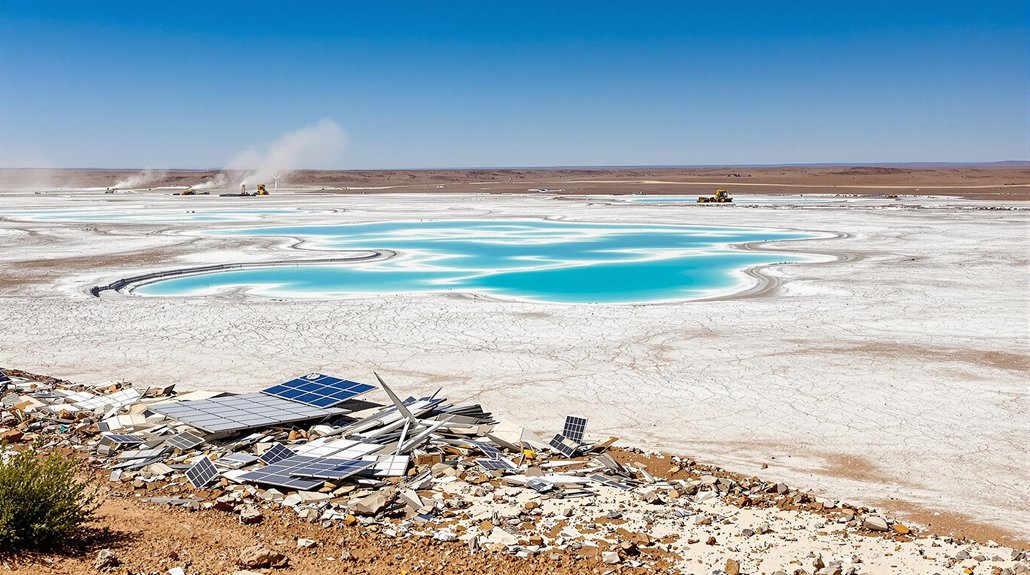While Virginia debates its energy future, solar farms are quietly eating up the countryside. The numbers don’t lie. As of May 2025, the Old Dominion hosts 130 utility-scale solar farms sprawling across 30,000 acres. That’s a lot of farmland converted to glass and metal.
The state legislature just threw more fuel on the fire. They bumped up the “behind the meter” solar carveout from a measly 1% to 5% by 2028. Translation: more small solar projects are coming, whether rural counties like it or not. Even Dominion’s getting in on the action through their subsidiaries.
Virginia quintupled its solar carveout, guaranteeing small projects will multiply across rural counties.
Here’s where it gets interesting. Virginia could see up to 147,000 acres of solar panels by 2035 under high-growth scenarios. That’s 3.1% of the state’s cropland potentially gone. Farmers aren’t thrilled. Neither are the folks watching forests disappear.
The new rules changed everything. Projects up to 3 megawatts now count as “distributed energy resources” instead of the old 1-megawatt cap. They even ditched the 50-kilowatt minimum requirement. Now grandma’s tiny rooftop setup counts too.
Rural counties tried fighting back with zoning restrictions. Result? Large-scale solar growth has stagnated in some areas. But the momentum’s still there. Solar could provide 15% of Virginia’s electricity by 2035 if projections hold. The state added 26 solar farms in 2024 alone, showing no signs of slowing down.
The State Corporation Commission keeps watch, supposedly. They’ll adjust distributed solar ratios as needed. Meanwhile, developers eye rural land because it’s cheap and available. Urban rooftops and brownfields could work, but nobody’s rushing to put panels there.
Economics drive everything. Solar’s among the cheapest electricity sources in Virginia. Jobs follow the panels, especially in rural communities that need them. This aligns with national trends as clean energy jobs grew at twice the rate of the overall economy in 2023. The carbon-free generation helps meet greenhouse gas goals, which sounds great on paper.
The irony’s thick. Virginia wants clean energy but doesn’t want to sacrifice its countryside. Solar farms create jobs but swallow farmland. They’re carbon-free during operation but require massive land conversion upfront. The new legislation aims to shift solar from 8,000-9,000 acres of forest and farmland to more urban installations. Progress always comes with a price. In Virginia’s case, that price is measured in acres.
References
- https://cleanview.co/solar-farms/virginia
- https://www.vpm.org/news/2025-03-03/callsen-vanvalkenburg-small-solar-projects-bill-general-assembly-dominion-energy
- https://www.williamsmullen.com/insights/news/legal-news/2025-virginia-general-assembly-summary-energy-data-center-bills
- https://www.dominionenergy.com/projects-and-facilities/solar-energy-facilities-and-projects/virginia-solar-projects
- https://news.vcu.edu/article/2025/03/vcu-researchers-assess-land-impacts-of-virginias-solar-industry–now-and-in-the-future








